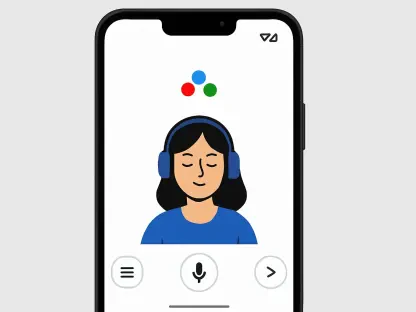In a world where creativity is increasingly driven by technology, Adobe has once again set the stage for groundbreaking innovation at its annual conference held in Los Angeles this year. The event unveiled a transformative array of updates that promise to redefine how creators, from seasoned professionals to casual enthusiasts, approach their craft. With artificial intelligence (AI) at the forefront, Adobe introduced enhancements that not only streamline workflows but also push the boundaries of what’s possible in digital content creation. From advanced image models to mobile-first solutions and strategic partnerships, the announcements reflect a deep understanding of evolving industry needs. This year’s focus on automation, accessibility, and multimedia versatility signals Adobe’s commitment to empowering users with tools that are as intuitive as they are powerful, ensuring that creativity remains limitless in an ever-changing digital landscape.
Revolutionizing Creativity with AI-Powered Tools
At the heart of Adobe’s announcements this year lies a profound emphasis on AI-driven solutions that aim to transform creative processes. The spotlight was on the Firefly platform, which has been significantly upgraded with the introduction of Firefly Image Model 5. This latest iteration delivers unprecedented realism in visuals, textures, and movements, supporting high-resolution image generation at 4 million native pixels. Features like Prompt to Edit allow users to make intricate adjustments through simple text inputs, while the integration of third-party models expands the platform’s capabilities. Beyond static images, Firefly is venturing into new territories with beta features for video and audio, such as Generate Soundtrack for custom instrumental music and Generate Speech for natural voiceovers with adjustable emotions and accents. These advancements highlight Adobe’s vision of creating a seamless, all-encompassing toolset that caters to diverse creative demands with cutting-edge technology.
Further expanding on AI’s role, Adobe introduced automation tools designed to handle large-scale projects with ease. Firefly Creative Production enables bulk image editing, a boon for industries requiring consistent output at volume, while Firefly Custom Models ensure uniformity in asset creation by adhering to specific styles. Another standout is Project Moonlight, a conversational AI interface that offers real-time recommendations and task automation within applications. This intuitive feature acts as a virtual assistant, guiding users through complex workflows and suggesting creative solutions tailored to their needs. The overarching goal of these tools is to reduce repetitive tasks, allowing creators to focus on ideation and innovation. By embedding such intelligent systems into its ecosystem, Adobe is not only enhancing productivity but also democratizing access to professional-grade technology for users at all skill levels, reshaping the creative landscape.
AI Assistants Enhancing Creative Cloud Applications
Adobe’s commitment to efficiency and user-friendliness was evident in the rollout of AI assistants across its Creative Cloud suite. In Photoshop, the new AI Assistant stands out by guiding users through intricate edits, offering suggestions, and automating adjustments directly within the interface. This tool is particularly valuable for those navigating complex tasks, as it simplifies processes that once required extensive expertise. Adobe Express also received an AI boost with an assistant tailored for rapid social media content creation, enabling users to generate polished posts through conversational inputs. Additionally, targeted features like Generative Upscale and Harmonize in Photoshop improve image quality and seamlessly blend elements into scenes, showcasing how AI can refine even the smallest details to achieve professional results.
Beyond individual applications, Adobe has implemented over 100 functional improvements across Creative Cloud, reflecting a comprehensive approach to enhancing performance. In Premiere, AI Object Mask and advanced tracking features streamline video editing, while Lightroom’s Assisted Culling helps sort images with remarkable efficiency. These updates underscore a broader strategy to integrate AI in ways that save time without compromising on quality. By embedding intelligent assistance into familiar tools, Adobe ensures that users can leverage cutting-edge technology without facing a steep learning curve. This focus on accessibility is poised to benefit a wide range of creators, from graphic designers to video editors, by providing intuitive solutions that enhance workflow efficiency and elevate the overall creative output across multiple platforms.
Mobile Innovation and Strategic Collaborations
Recognizing the growing demand for on-the-go content creation, Adobe has placed a significant emphasis on mobile solutions this year. A key highlight was the strategic partnership with a major video-sharing platform to simplify the production of short-form content. Within the Premiere mobile app, a dedicated feature called Create for YouTube Shorts offers specialized effects, transitions, templates, and one-click additions like titles and overlays. Integrated Firefly-generated assets, such as sound effects, further enhance the creative process. Users can export directly to the platform or access Premiere mobile through an “Edit in Adobe Premiere” option, making professional-grade editing tools readily available to mobile creators and aligning with the industry’s shift toward vertical video formats.
This mobile-first approach extends beyond partnerships, as Adobe continues to refine its tools to meet the needs of a generation of creators who prioritize speed and accessibility. The seamless integration of advanced editing capabilities into mobile platforms reflects an understanding of shifting content consumption patterns, where quick, impactful videos dominate social media landscapes. By equipping users with robust tools that fit into the palm of their hands, Adobe is catering to the rising tide of casual creators and influencers who seek professional results without the complexity of desktop software. This initiative not only broadens the reach of Adobe’s technology but also reinforces its position as a leader in adapting to contemporary trends, ensuring that creators of all backgrounds can produce high-quality content anytime, anywhere.
Shaping the Future of Multimedia Creation
Reflecting on the unveilings at this year’s conference, Adobe demonstrated a bold vision for the future of creativity through its focus on AI and multimedia integration. The advancements in Firefly, from realistic image generation to beta audio and video tools, marked a significant leap forward in providing versatile solutions for creators. AI assistants across Creative Cloud applications redefined efficiency, while the push into mobile content creation through strategic partnerships addressed modern consumption habits with precision. Each announcement built on a unified goal of making sophisticated tools accessible to all, bridging the gap between amateur and professional output.
Looking ahead, the impact of these innovations invites consideration of how creators can harness them to push creative boundaries further. Exploring Firefly’s customization options or leveraging mobile tools for quick, high-quality content could be the next step for many. As Adobe continues to shape the industry, staying attuned to these evolving technologies will be essential for anyone aiming to remain at the forefront of digital creation, ensuring they are equipped to adapt and thrive in a rapidly changing environment.









